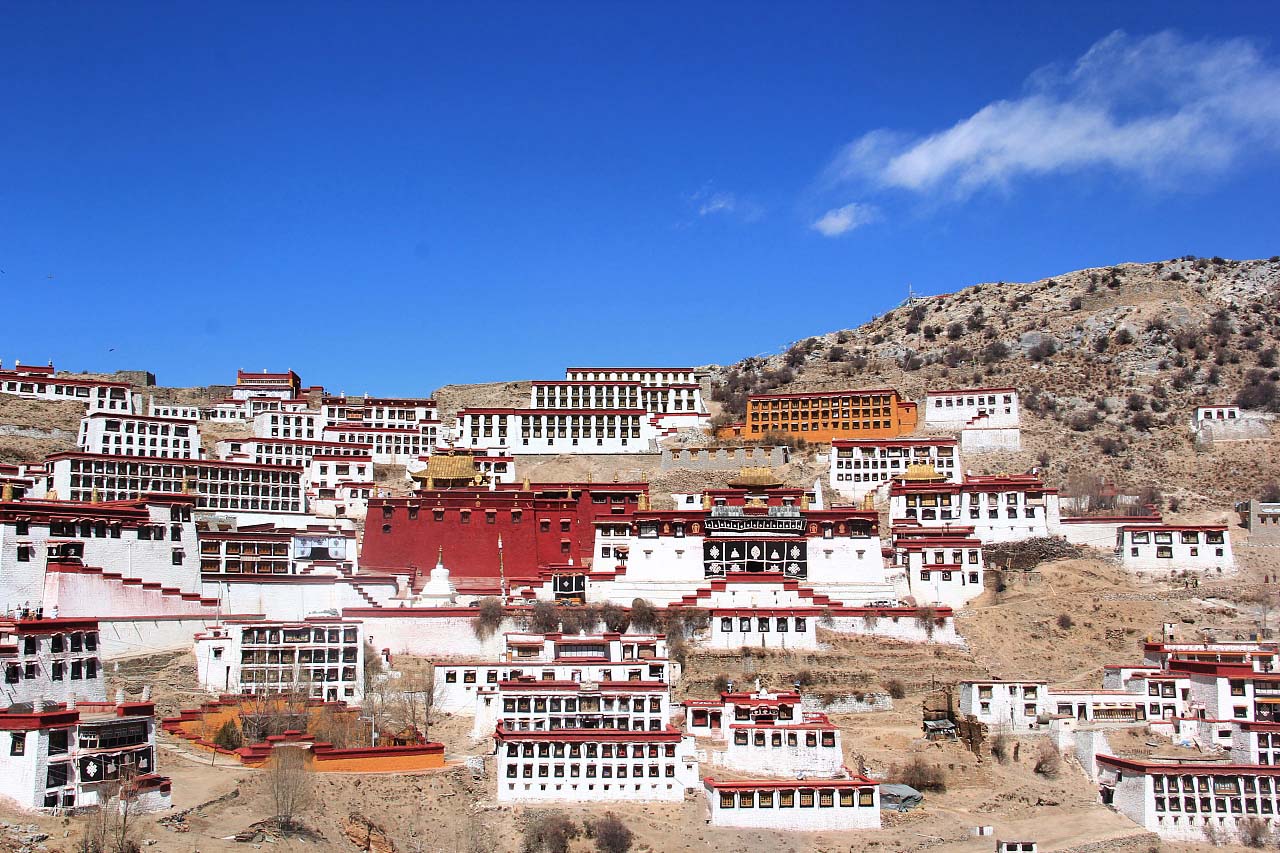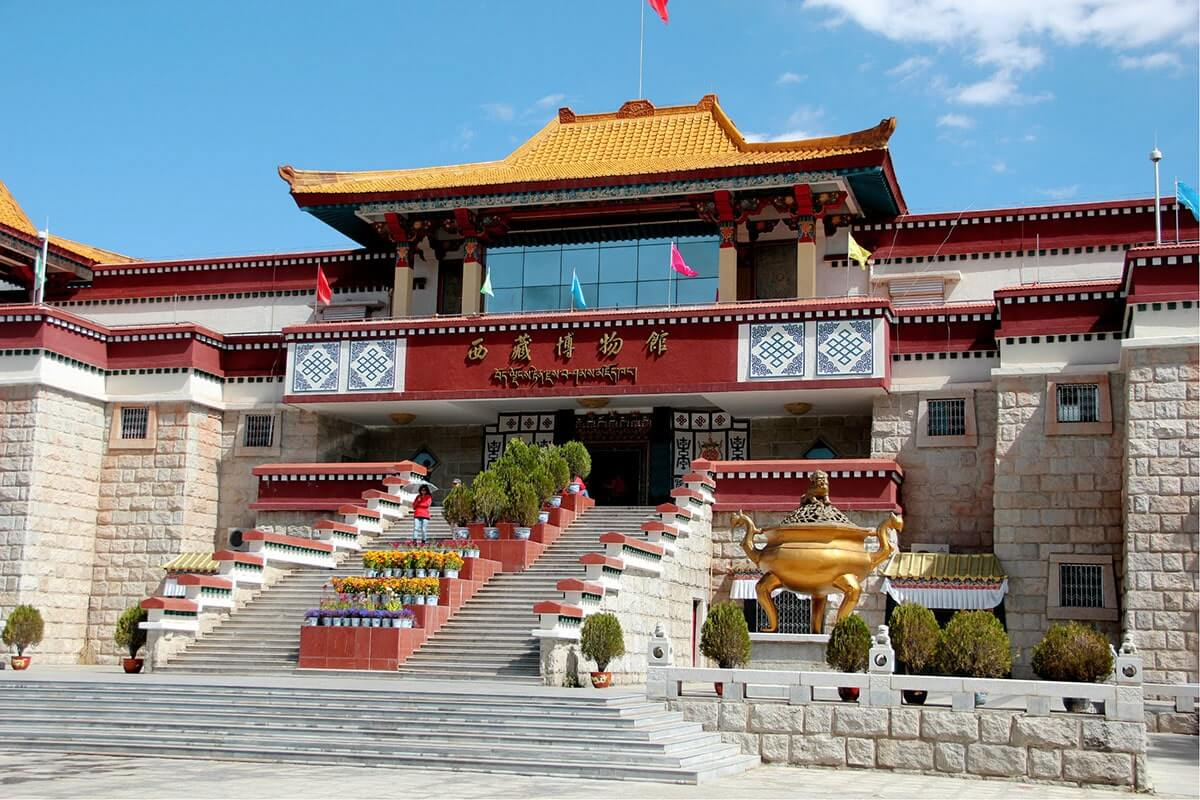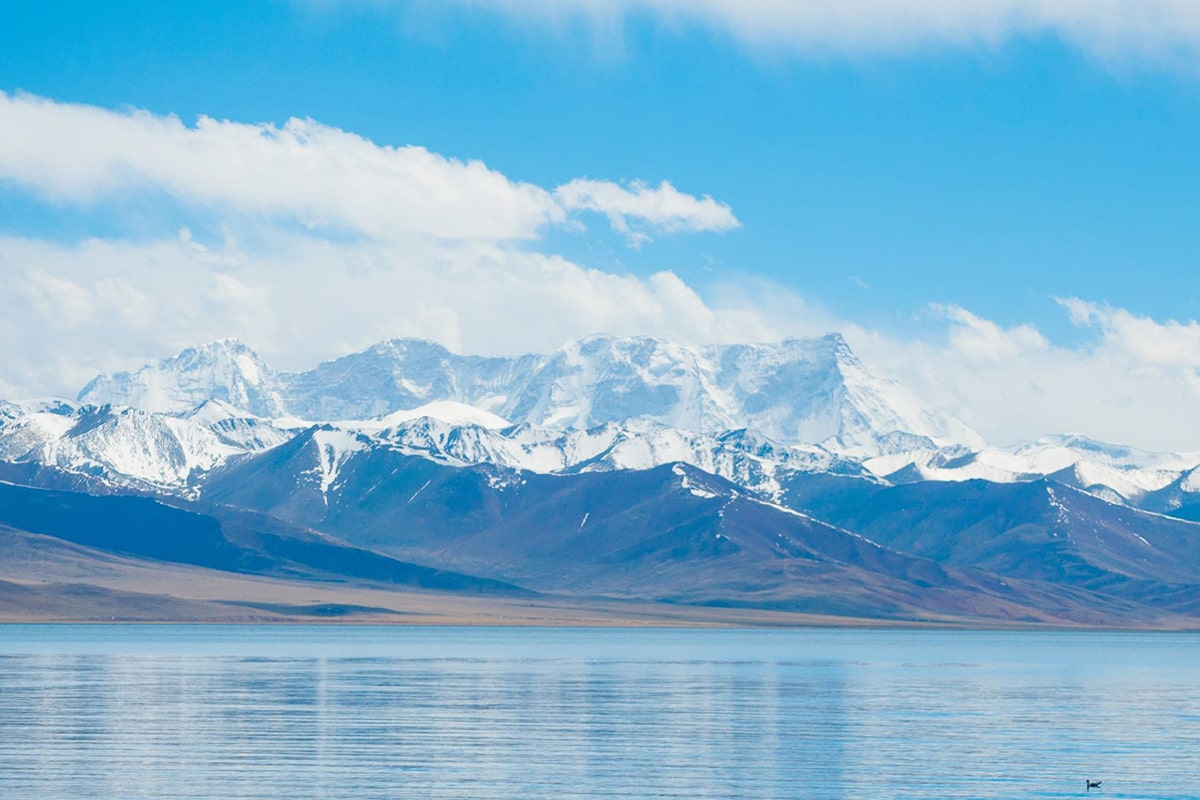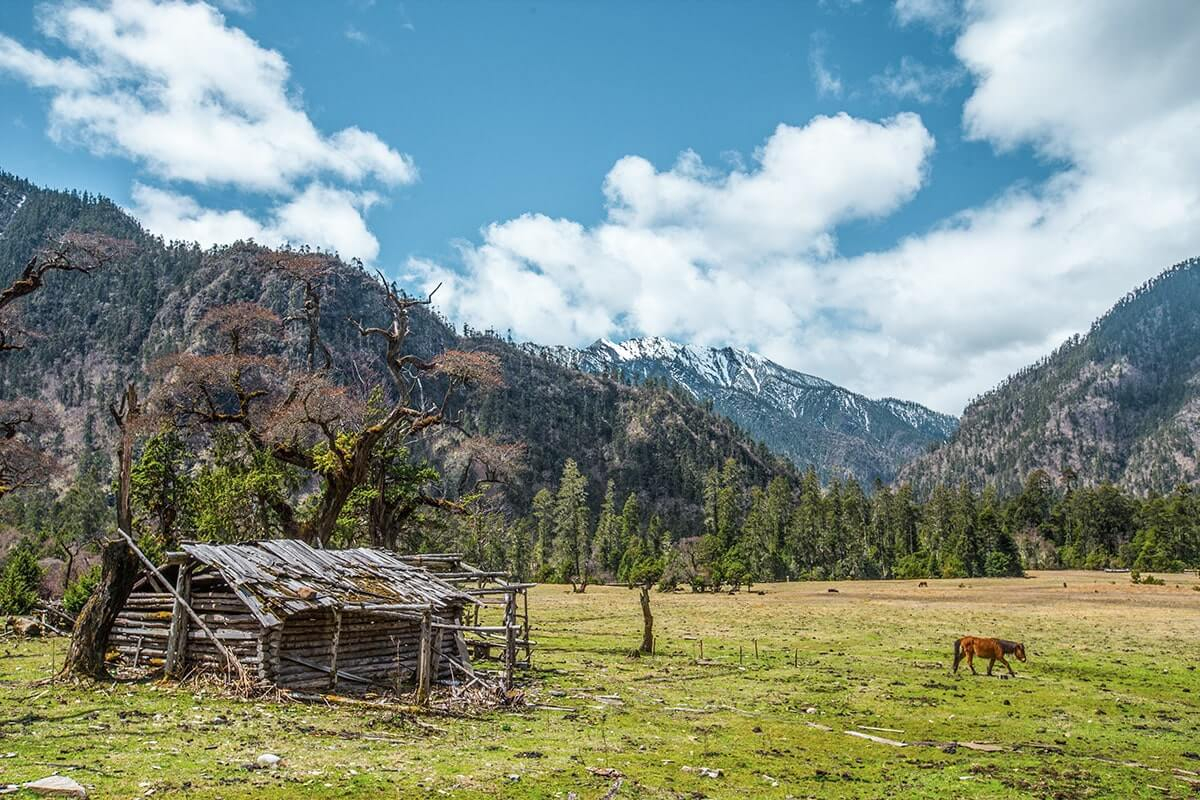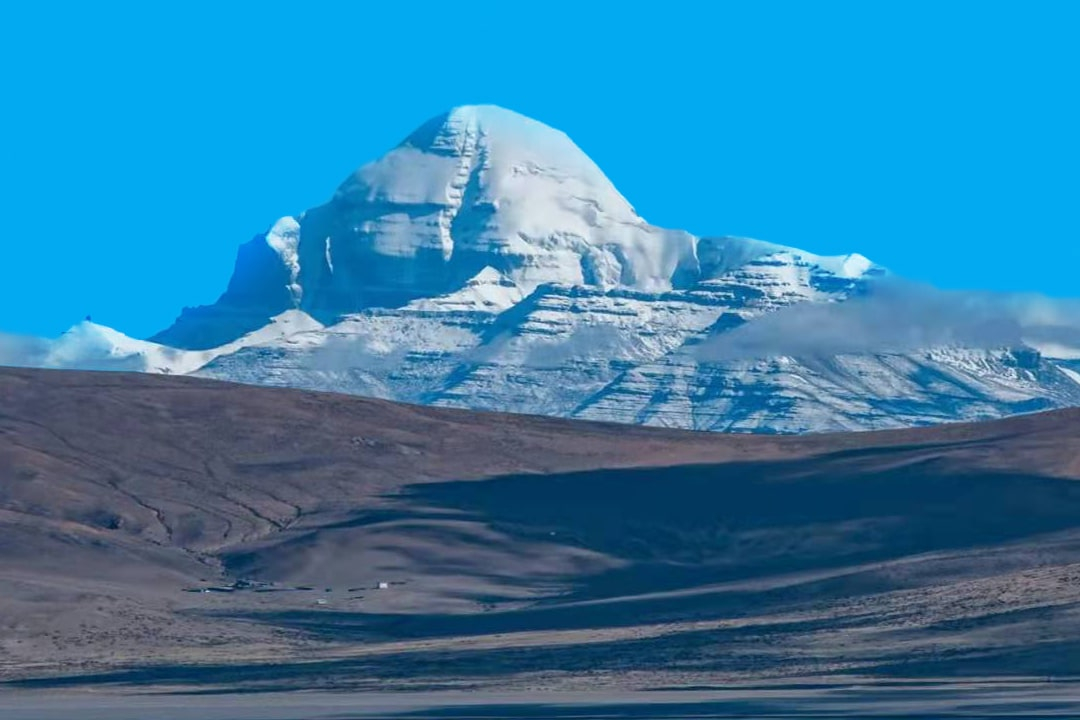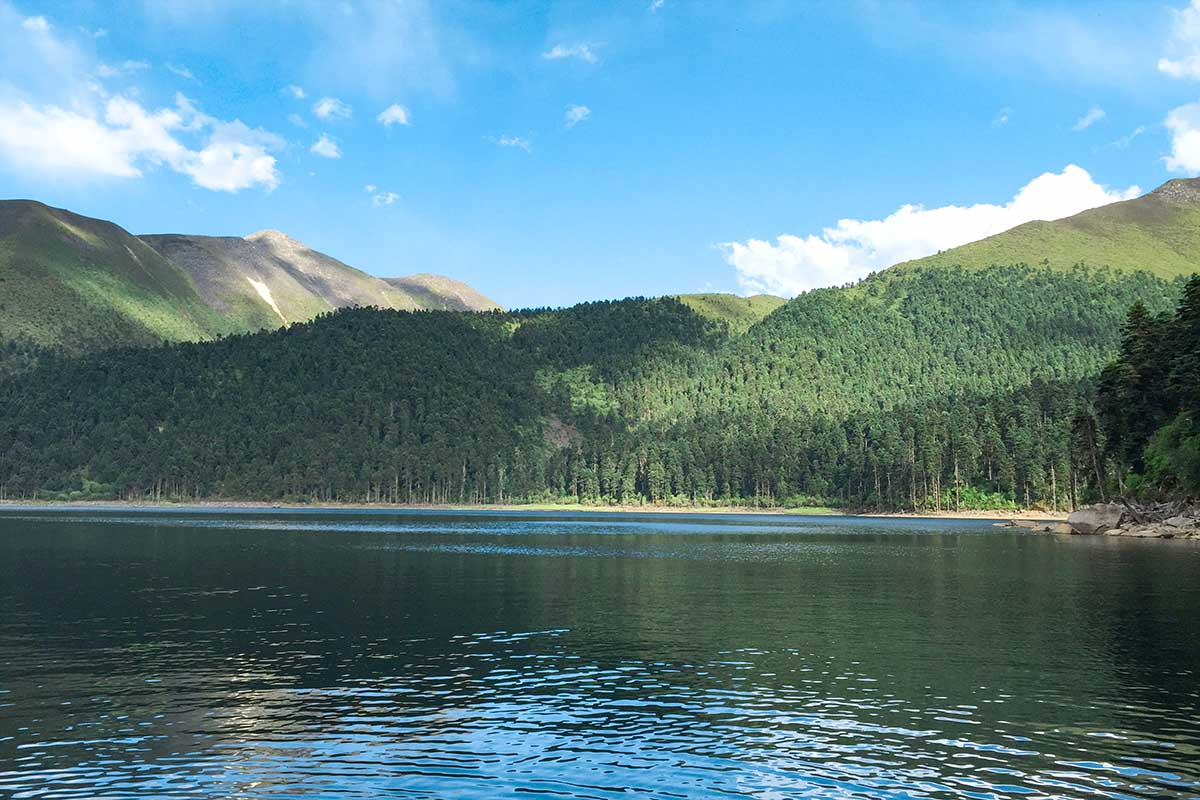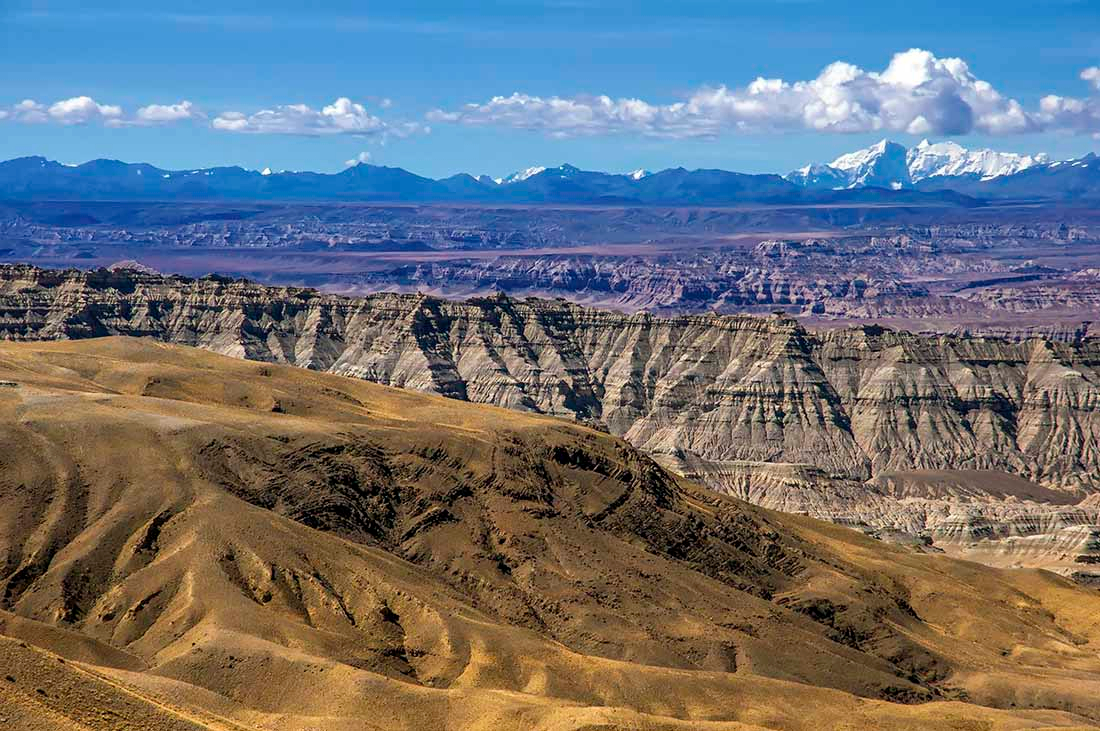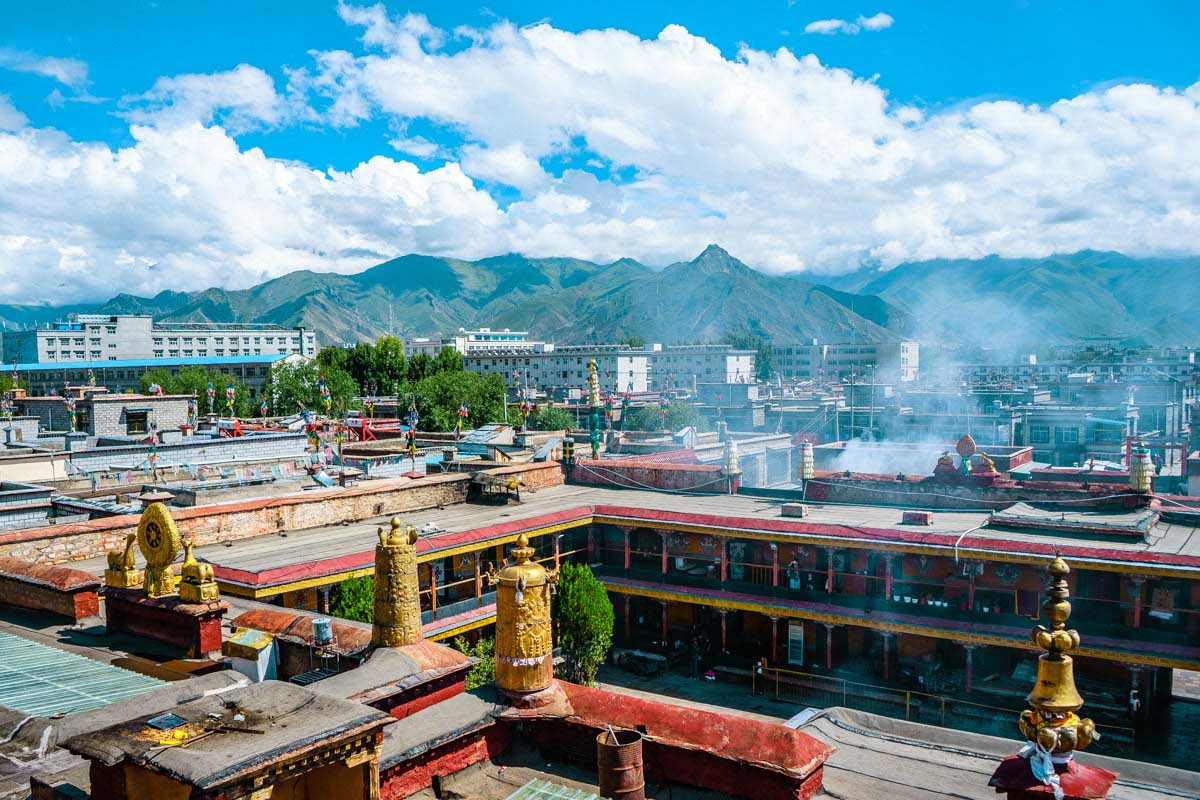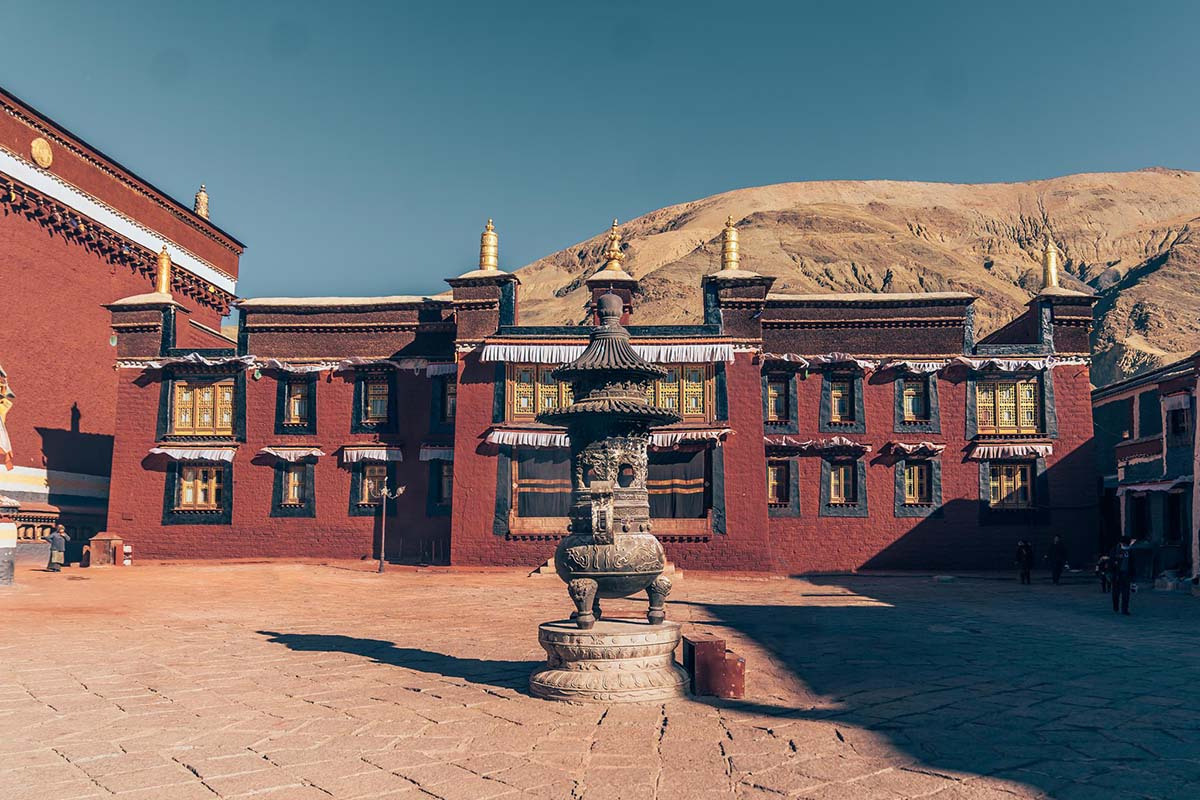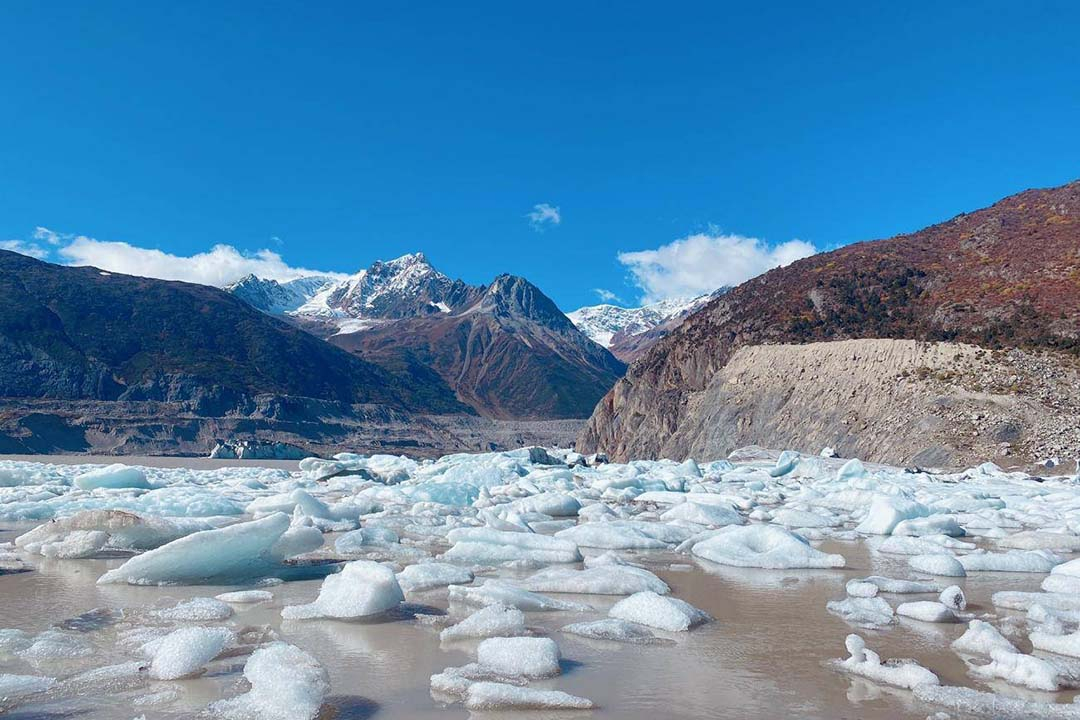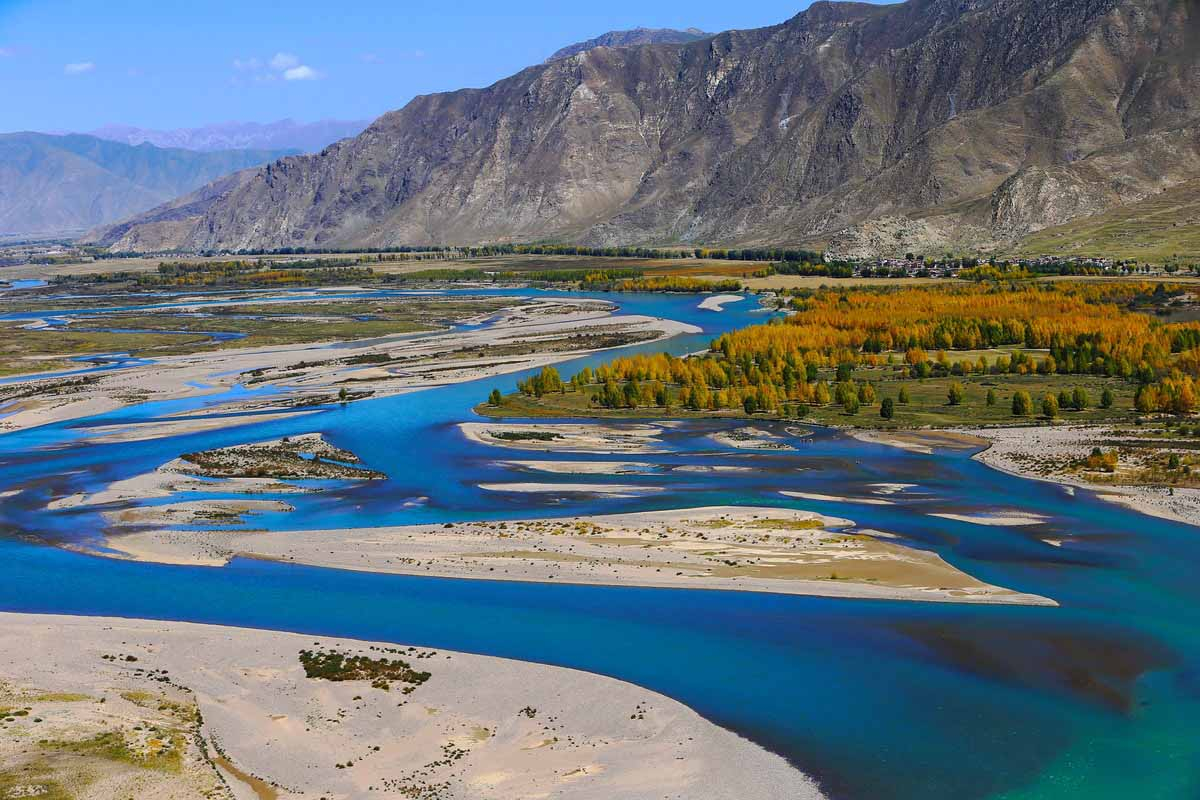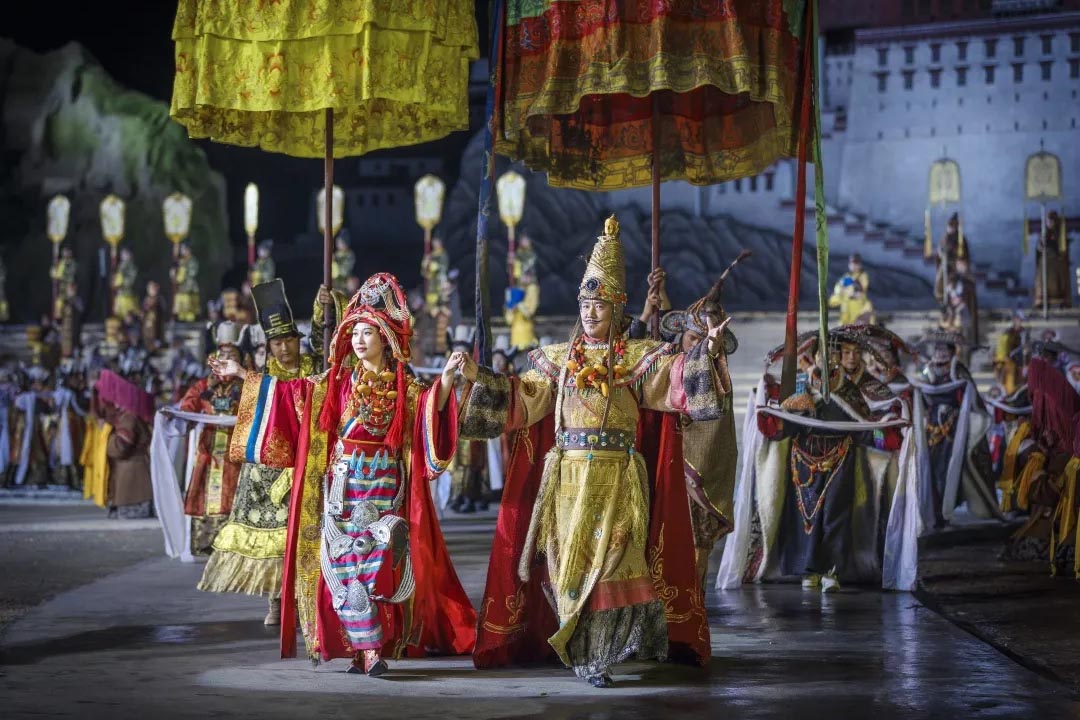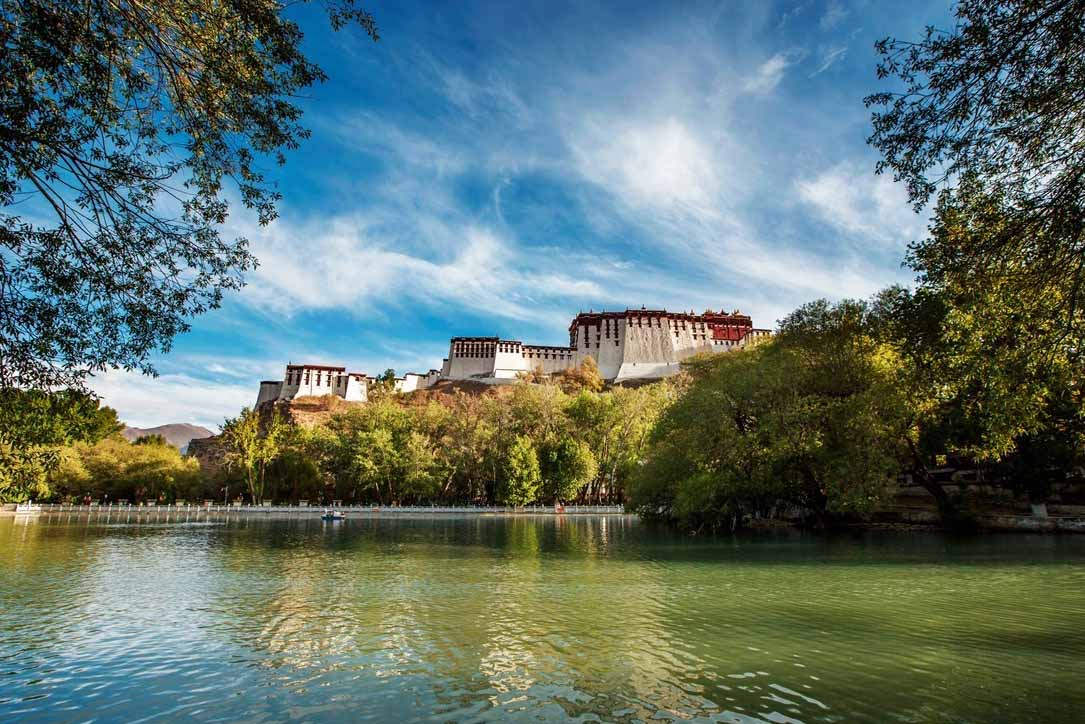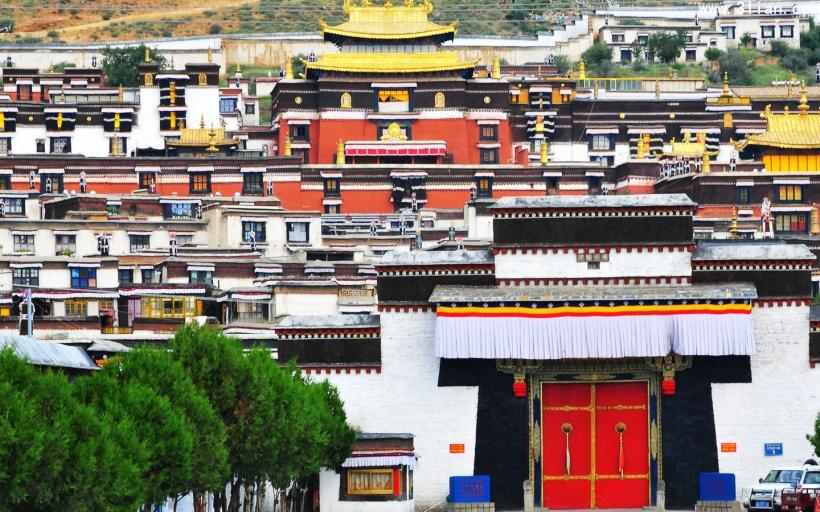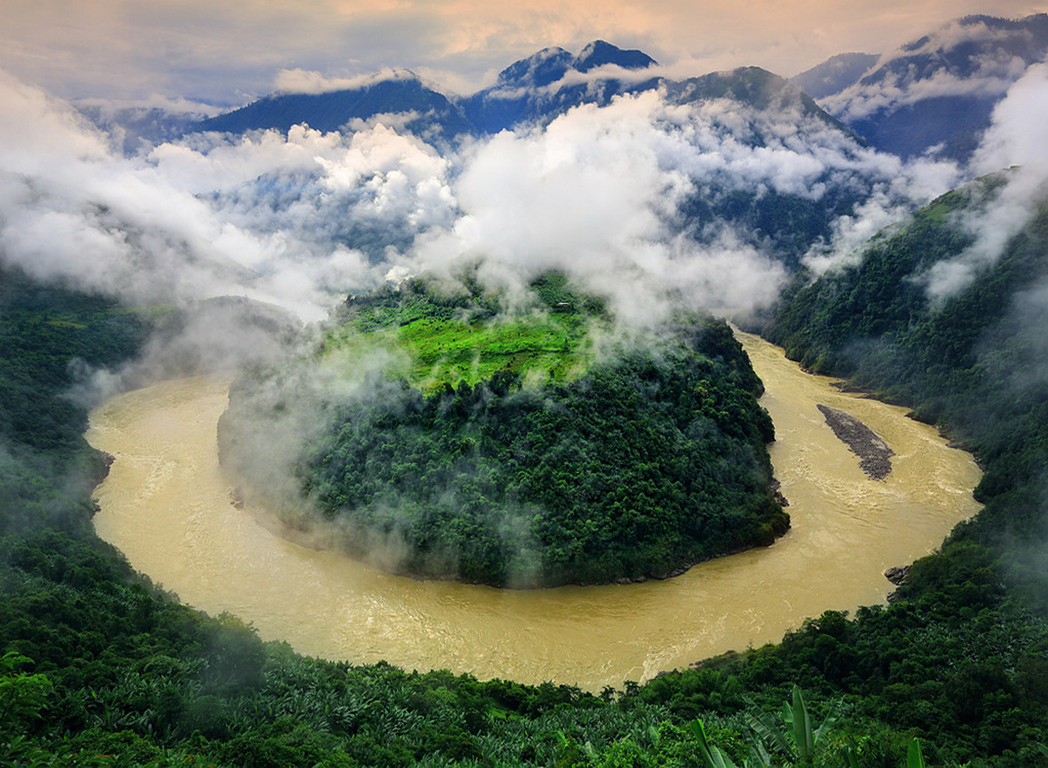Gandan Monastery
Chinese name: 甘丹寺 (Gan Dan Si)
Location: Dagze County, Lhasa, Tibet.(about 57 kilometers to the east of Lhasa City)
Ticket: Entrance tiekct CNY40.00
Estimated tour time: 2-4 hours
Recommended time to visit: May-Oct.
Elevation: around 3800m
Nearby attractions: Potala Palcae, Jokhang Monastery, Barkhor Street, Sera Monastery, etc.
Located in Dagze County, Lhasa, Ganden Monastery (also Gaden or Gandain) or Ganden Namgyeling is the 1st and primary monastery of the Gelug School of Tibetan Buddhism as well as one of the "great three" Gelug university monasteries of Tibet, The other two are Sera Monastery and Drepung Monastery. Ganden Monastery was founded in 1409 by Je Tsongkhapa Lozang-dragpa, founder of the Gelug order.
Ganden contained more than two dozen major chapels with large Buddha statues. The largest chapel was capable of seating 3,500 monks. Tenzin Gyatso, the 14th Dalai Lama (born 1935), took his final degree examination in Ganden in 1958 and he claims to feel a particularly close connection with Tsongkhapa.The monastery runs a guesthouse for visitors. Ganden's main assembly hall is a white building with gold-capped roofs, near a huge square. The main chapel contains many gilded images of Tsongkhapa. A maroon and ochre chapel beside the main assembly hall has a statue of Sakyamuni Buddha, and has a section used for hand-printing scriptural texts using wood blocks.
The three main sights in the Ganden Monastery are the Serdung, which contains the tomb of Tsongkhapa, the Tsokchen Assembly Hall and the Ngam Cho Khang the chapel where Tsongkhapa traditionally taught. The monastery houses artifacts that belonged to Tsongkhapa.
● History of Gandan Monastery
Tsongkhapa (1357-1419), the founder of Ganden Monastery, who was supposed to the reincarnation of Manjusri, born in Qinghai, and firstly contacted the Buddhism when he was three years old. After studying 9 years Buddhist doctrine for 9 years in Xia Qiong Temple, he left Qinghai to Tibet for further study in the year of his age of 16. In the later years, he learned from different sects’ monks and sucked up all the essential of the Buddha dharma. At the same time, he got more and more reputations in Tibet.
In the early 15th century, Tsong Khapa called for the Reformation of Religion, advocating the rooting out the previous disadvantages in religious orders and initiated the Gelugpa. This order went on to become the biggest sect in Tibetan Buddhism, its founder Lama Tsongkhapa meditated to choose the place for a new monastery. About seventy buildings of the complex were built in the first few years. The main Assembly Hall was erected in 1417, and only two years later Lama Tsongkhapa died in his humble chamber in Ganden. Taking Ganden Monastery as the base, the Gelug Sect was formally established. The monks of the sect wore yellow hats, so the sect was known as the "Yellow Sect".
The first Panchen Erdeni Kezhugyi was the first disciple of Zongkapa and the first Dalai Lama Gendun Zhuba was the youngest disciple of Zongkapa. As the major educational institute in the history of Tibet, the monastery contributed to medicine, astronomy, calendar, philosophy and literature and the artistic fields of music, dance, drama and painting of the Tibetan ethnic group, promoting the development of Tibetan traditional culture and prosperity of Tibetan Buddhism.
In the past, the monastery boasted 31 halls and over 1,000 rooms for the residence of monks. The rated number of monks in the monastery in the Qing Dynasty was 3,300.
However, the Gandain Monastery was ruined in the chaotic "Cultural Revolution" in the 1960s. Subsequently, part of the halls and rooms for monks were rebuilt with subsidies from the people's government and pilgrim donations.
● Tsongkhapa Butter Lamp Festival
Tsongkhapa Butter Lamp Festival, celebrated in whole Tibet is the most important traditional festival in Ganden Monastery to mourn its founder. Hold on October 25 of Tibetan calendar, the death date of Tsongkhapa, this festival is quite solemn and grand. During the daytime, the 26 meters long, 10 meters wide tapestry of Buddha hanging outside the temple, and in the night, all the butter lamps light up the whole monastery to make the worship all-night. The local Tibetans around villages prepare the butter lamps several days in advance and light them up on that day by putting them along the window side.
- HOTEST
- RECOMMEND
